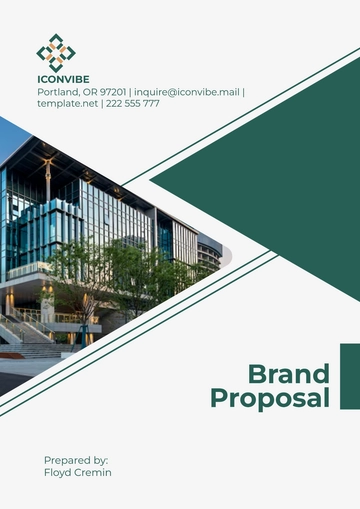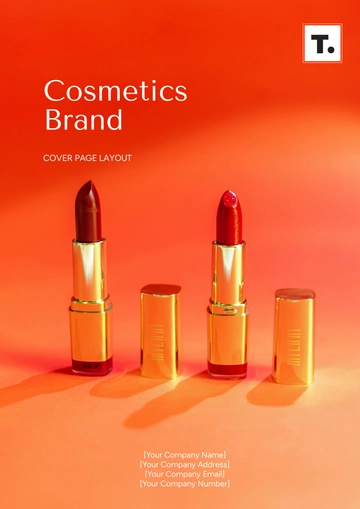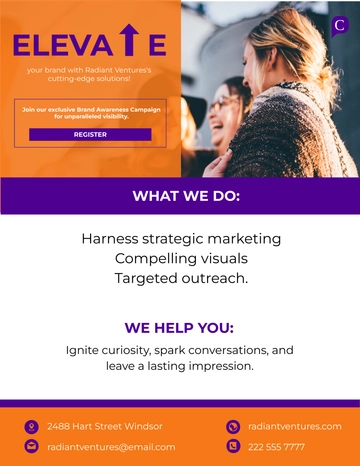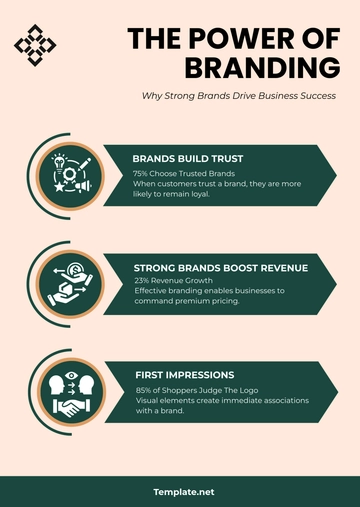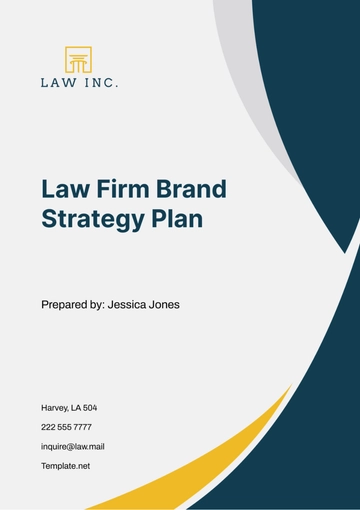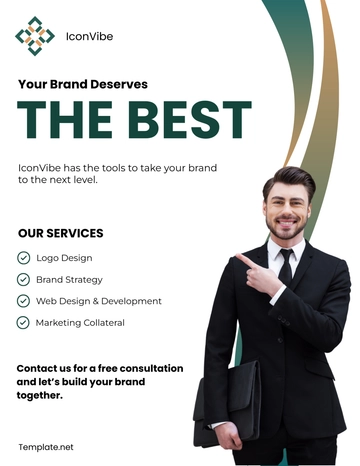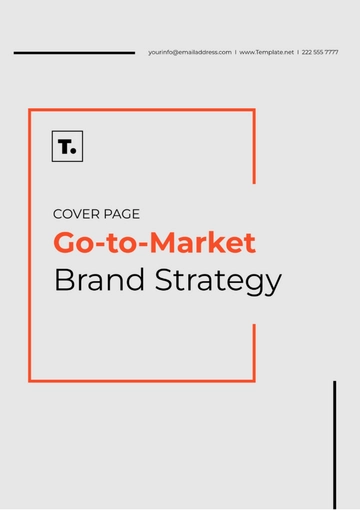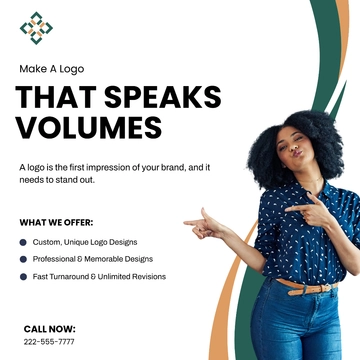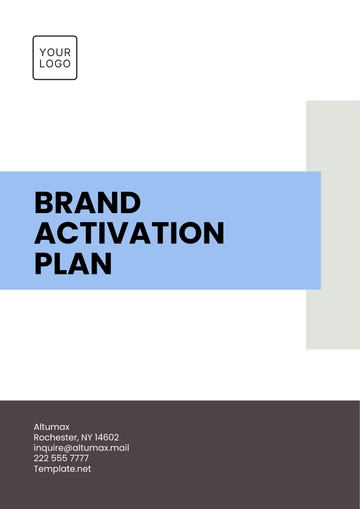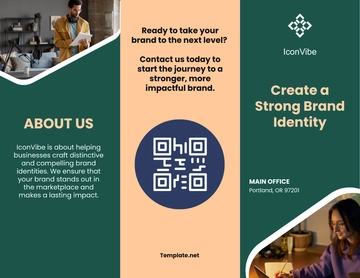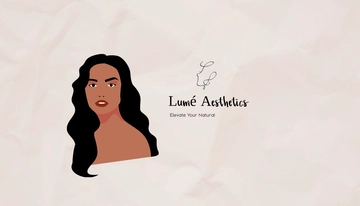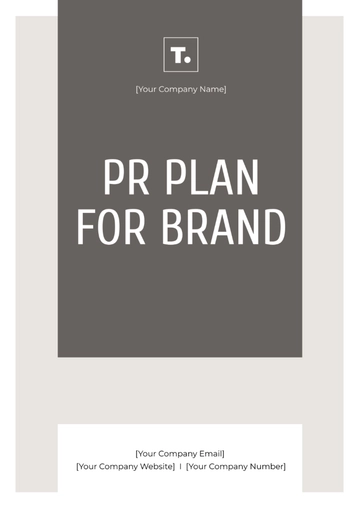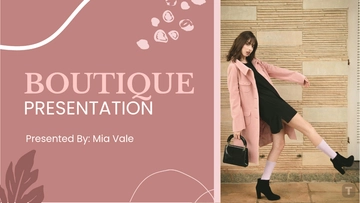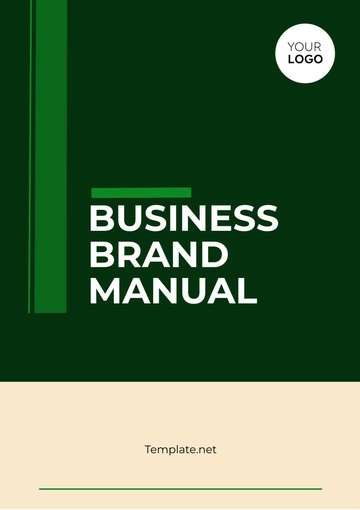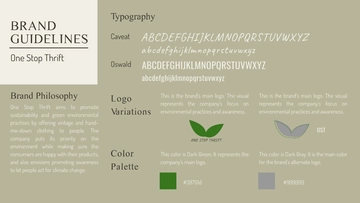Free Brand Brief Design
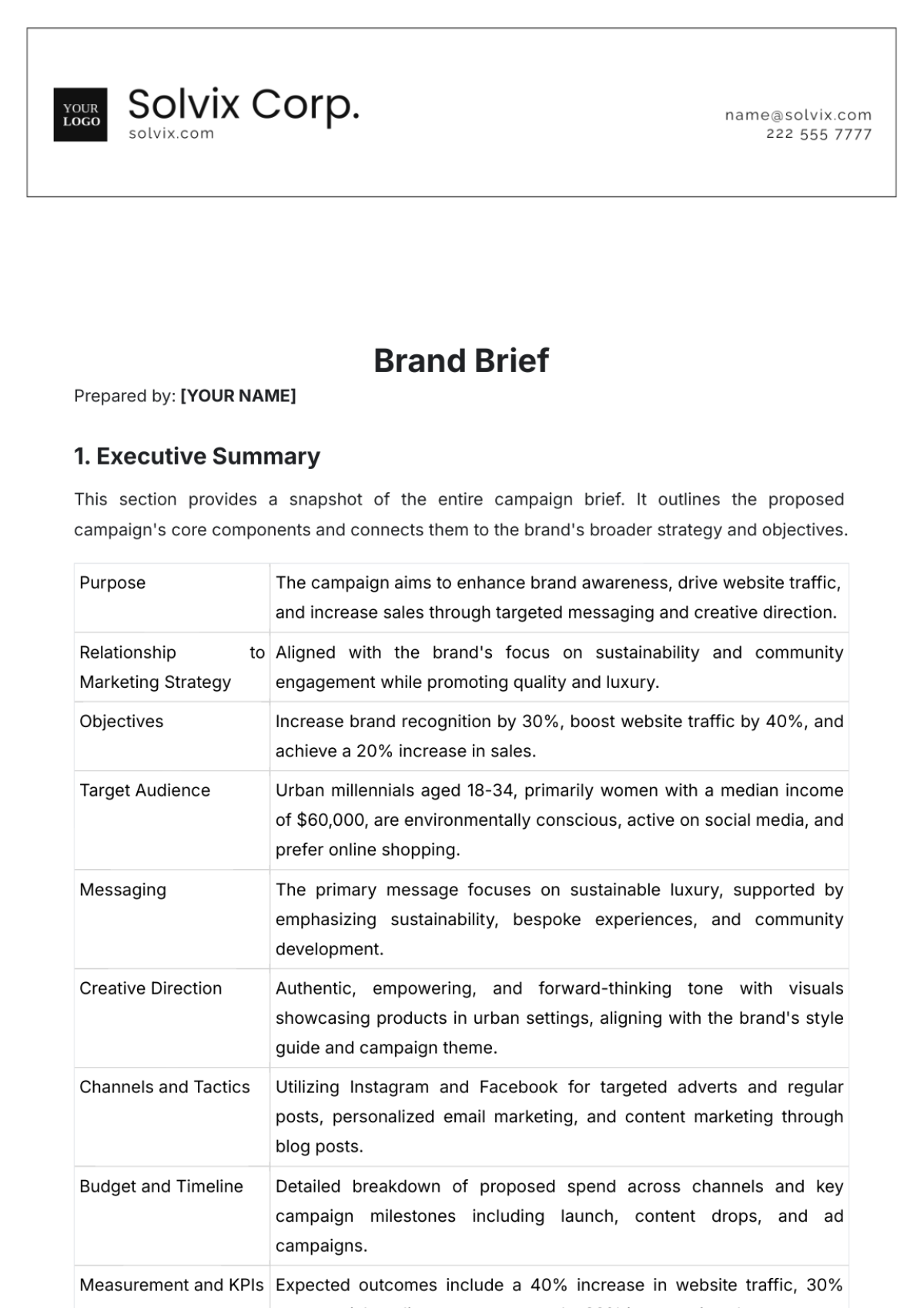
Prepared by: [YOUR NAME]
1. Executive Summary
This section provides a snapshot of the entire campaign brief. It outlines the proposed campaign's core components and connects them to the brand's broader strategy and objectives.
Purpose | The campaign aims to enhance brand awareness, drive website traffic, and increase sales through targeted messaging and creative direction. |
Relationship to Marketing Strategy | Aligned with the brand's focus on sustainability and community engagement while promoting quality and luxury. |
Objectives | Increase brand recognition by 30%, boost website traffic by 40%, and achieve a 20% increase in sales. |
Target Audience | Urban millennials aged 18-34, primarily women with a median income of $60,000, are environmentally conscious, active on social media, and prefer online shopping. |
Messaging | The primary message focuses on sustainable luxury, supported by emphasizing sustainability, bespoke experiences, and community development. |
Creative Direction | Authentic, empowering, and forward-thinking tone with visuals showcasing products in urban settings, aligning with the brand's style guide and campaign theme. |
Channels and Tactics | Utilizing Instagram and Facebook for targeted adverts and regular posts, personalized email marketing, and content marketing through blog posts. |
Budget and Timeline | Detailed breakdown of proposed spend across channels and key campaign milestones including launch, content drops, and ad campaigns. |
Measurement and KPIs | Expected outcomes include a 40% increase in website traffic, 30% more social media engagement, and a 20% increase in sales. |
2. Campaign Goals and Objectives
The section delineates the specific goals this campaign aims to achieve. It ties the objectives of the campaign to the overarching goals of the brand.
Goal | Objective |
|---|---|
Enhance Brand Awareness | Increase brand recognition by 30% among the targeted audience in the next quarter. |
Drive Website Traffic | Boost traffic to the brand's website by 40% through the campaign. |
Increase Sales | Achieve a 20% sales increase via the campaign's promotional efforts. |
3. Target Audience
This section outlines the demographic and psychographic profiles of those the campaign aims to engage.
Demographics: Age 18-34, urban millennials, primarily women with a median income of $60,000.
Psychographics: Environmentally conscious, progressive, highly active on social media, and prefer online shopping.
Insights: Sustainable Value brands, support local communities, and offer personalized, digital experiences.
4. Messaging Strategy
The messaging strategy encompasses the core messages the campaign will push to engage with its target audience effectively.
Primary message: "Experience sustainable luxury with [Brand] — for those who value quality and care about the world around them".
Supporting messages: Emphasize the brand's commitment to sustainability, bespoke experiences, and community development.
5. Creative Direction
This section outlines the creative principles guiding the campaign's look and feel, ensuring it resonates with the target audience while staying true to the brand's identity.
Tone: Authentic, empowering, and forward-thinking.
Visuals: Use natural tones, clean lines, and visuals showcasing the product in everyday urban settings.
Style Guidelines: Align with the brand's existing style guide and proposed campaign theme.
6. Channels and Tactics
This section details the specific channels the campaign will utilize and the tactics for each.
Social Media: Leverage Instagram and Facebook to run targeted adverts and regular engaging posts.
Email Marketing: Send weekly personalized emails featuring products, stories, and special offers.
Content Marketing: Regular blog posts spotlighting sustainability and community initiatives.
7. Budget and Timeline
This section details the proposed budget allocation and campaign timeline, linking spend to expected results.
Budget Allocation: Breakdown of the proposed spending across all campaign channels.
Timeline: Key campaign dates, including launch, major content drops, and ad campaigns.
8. Measurement and KPIs
The final section outlines the campaign's success measures, outlining the Key Performance Indicators (KPIs).
KPI | Expected Outcome |
|---|---|
Website Traffic | 40% increase |
Social Media Engagement | 30% more interactions |
Sales | 20% increase |
Conclusion
In conclusion, the devised campaign strategy aims to boost brand recognition, website traffic, and sales among urban millennials using sustainability and community-focused messaging. The campaign aligns with the brand's identity, strategically deploys channels, and has a clear budget and timeline to achieve its goals. Success will be monitored through key performance indicators like website traffic, social media engagement, and sales, expecting a substantial increase in traffic and sales and augmented social media interactions.
- 100% Customizable, free editor
- Access 1 Million+ Templates, photo’s & graphics
- Download or share as a template
- Click and replace photos, graphics, text, backgrounds
- Resize, crop, AI write & more
- Access advanced editor
Introducing the Brand Campaign Brief Template from Template.net! Craft compelling campaigns effortlessly with this editable and customizable tool. Tailor your strategy with ease using our Ai Editor Tool, ensuring seamless execution every time. Elevate your brand's presence and streamline your workflow with this indispensable resource. Get ready to create impactful campaigns effortlessly.

